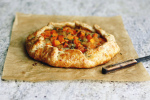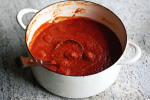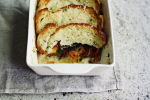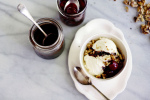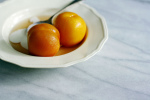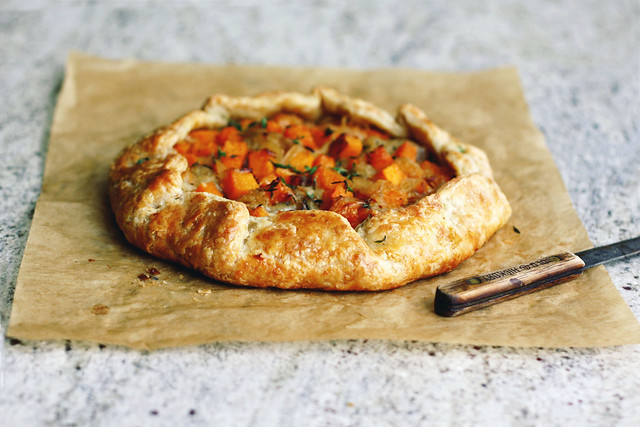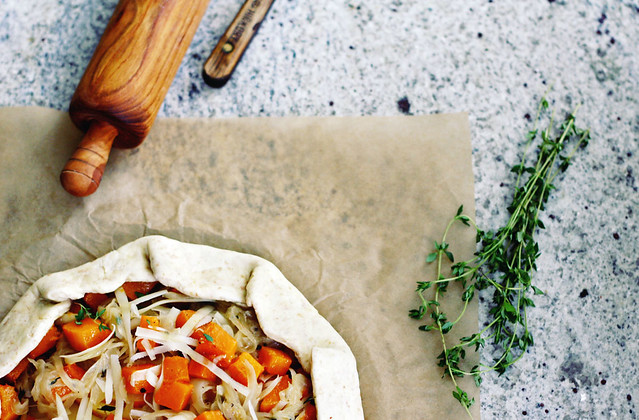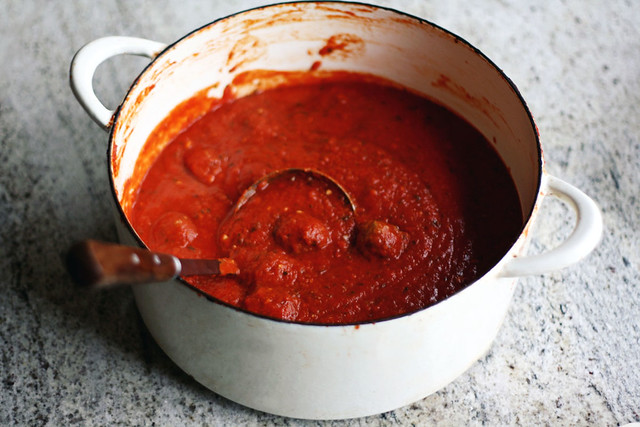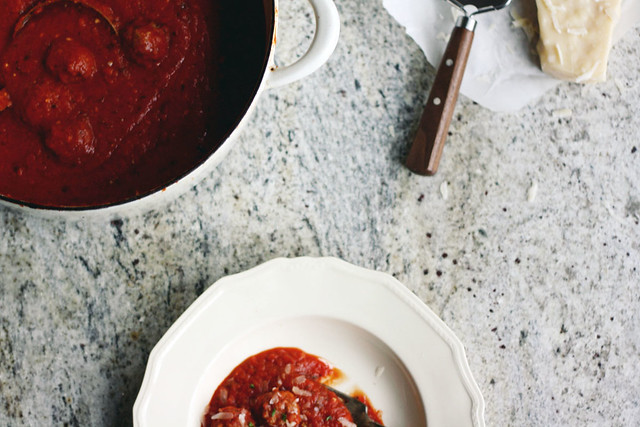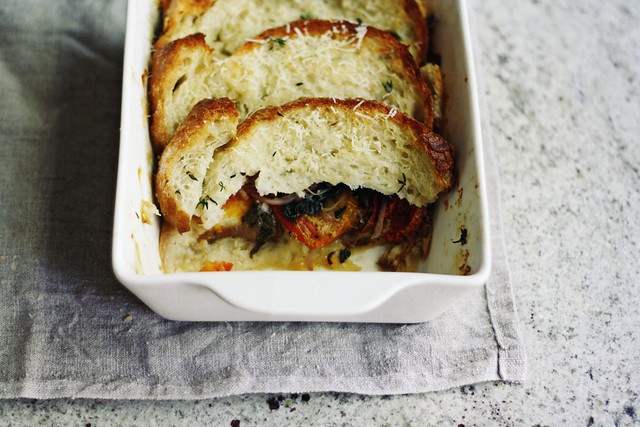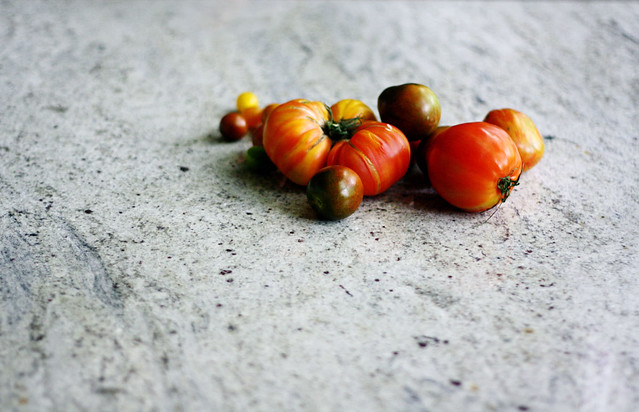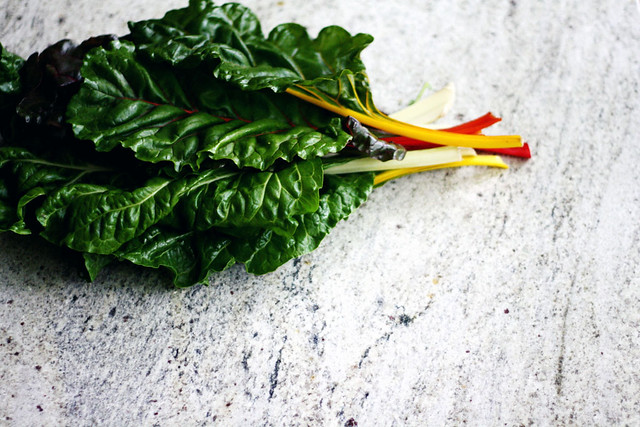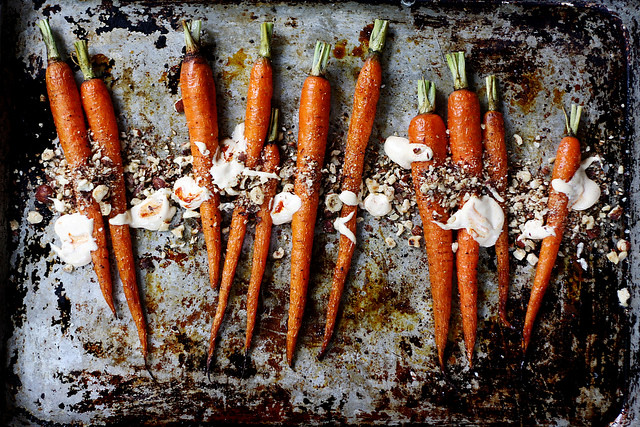The big tah-da
 Wednesday, November 21, 2012 at 9:12AM
Wednesday, November 21, 2012 at 9:12AM I'm well aware that many of you are counting down the hours (minutes?) until Thanksgiving. To that end, I'll cut to the big tah-da: a spectacular savoury galette, one with caramelized onions, Fontina cheese, and roasted butternut squash.
For all of us not celebrating a holiday tomorrow, consider that lack of turkey, stuffing and pie an unexpected boon, as your oven is now free and clear to make said galette — which, if you don't mind the suggestion, is something I think you should do.
It is a recipe from Deb, found on page 99 of her bestseller, The Smitten Kitchen Cookbook (Appetite by Random House, 2012).
Deb is a superstar already, hardly needing any explanation or introduction as to why her recipes are crowd-pleasing and craveworthy, or how her writing gives only a glimpse of vivacious personality behind those words. All the things you've come to expect from her site have been seamlessly translated to her book; it is chock full of photographs, detailed procedures and helpful notes. She is right there with you for every step of the recipe.
A particular and attentive cook, Deb is one that considers details. She’s like America’s Test Kitchen with less suspenders and more fun, with the added bonus of an adorable toddler. She tests recipes thoroughly; she talks about what worked and what didn’t, she explains her thought process of why she tried this and not that, why she recommends a certain technique — she does her best to consider every angle, every possibility, every variation she can, to get to the best possible result.
So when she presents you with a golden-crusted, filled-with-goodness galette, it will, indeed, be as delicious as it looks. And oh, that crust. Made by hand, it comes together quickly, gorgeously pliable and forgiving to work with. Where lesser crusts might put up some resistance or even crack, this one feels like cool, weighty fabric and smoothly falls into neat pleats. When it bakes, it puffs into layers, opening up those folds and rounding out. The edge shatters into large flakes, and where it is thicker, it goes pillowy with air.
I can see this pastry as means of conveyance for all sorts of deliciousness, kale and feta maybe, or sliced tomatoes with roasted shallots. There's endless possibilities there; keep it bookmarked.
The filling is hardly a slouch either, lush with sweet onions and cubes of succulent squash, bound with cheese and set off with thyme. It is elegant and rustic, decadent and comforting, and absolutely autumnal.
In one of her earliest posts, Deb writes:
“I think that the basic instinct that gets us in the kitchen 'after all those messy sustenance issues have been attended to' is a deep-seated desire to make something taste a little better than the way we’ve come to accept it.”
That sums up why we keep turning to Deb, and her boundless generosity when it comes to her time, recipes and advice. She sincerely wants our meals to be better, and does her darndest to guarantee they are.
I'm thankful for her efforts, and her friendship.
Last week, I was honoured to host The Cookbook Store's author event with Deb in Toronto. Cheers to Alison and all the staff for organizing the night, to the chef school at George Brown College and Chef Scott for the welcome and the best signs I've ever seen. To everyone who attended, y'all were amazing. Your enthusiasm got me through some nerves.
And, congratulations Debbie on the book. It deserves all the success it’s getting, and more. Here's to another visit soon, French 75s all around. Tiramisu too.
BUTTERNUT SQUASH AND CARMELIZED ONION GALETTE
Excerpted from The Smitten Kitchen Cookbook (Knopf Publishing Group, 2012). Deb suggests this as an appetizer, or as a main. The recipe can also be divided to make two 9-inch galettes.
For the pastry
2½ cups (320 g) all-purpose flour, including 1/2 cup whole-wheat flour if you like, plus more for work surface
1/2 teaspoon (2 g) table salt
16 tablespoons (227 g) or 2 sticks, unsalted butter
1/2 cup (64 g) sour cream or full-fat Greek yogurt, strained
1 tablespoon (15 mL) white wine vinegar
1/3 cup (79 mL) ice water
For the filling
2 small or 1 large butternut squash, about 21/2 pounds (1134 g)
3 tablespoons (45 mL) oil
1½ teaspoons (5 g) tsp table salt
Freshly ground black pepper
1 tablespoon (14 g) butter
2 large sweet onions, such as Spanish or Vidalia, halved, thinly sliced in half-moons
1/4 teaspoon (1 g) sugar
1/4 teaspoon (1 g) cayenne pepper, or to taste (optional
2 cups (180 g) grated Italian Fontina cheese
1 teaspoon (4 g) chopped fresh thyme, or 2 teaspoons chopped fresh sage
1 egg beaten with 1 tsp (4 g) water, for glaze (optional, but makes for a croissant-looking finish)
To make pastry: In a bowl, combine the flour and salt. Add the whole sticks of butter and, using a pastry blender, break up the bits of butter until the texture is like cornmeal, with the biggest pieces the size of pebbles. In a small bowl, whisk together the sour cream, vinegar and water, and pour this over the butter-flour mixture. Stir with a spoon or a rubber spatula until a dough forms, kneading it once or twice on the counter if needed to bring it together. Pat the dough into a ball, wrap it in plastic and chill it in the refrigerator for an hour or up to two days.
To prepare squash: Peel the squash, then halve and scoop out seeds. Cut into ½-inch to ¾-inch chunks. Pour 2 tablespoons (30 mL) of the olive oil into one or two smaller baking sheets, spreading it to an even slick. Lay the squash chunks on the baking sheet in one layer, sprinkle with ½ teaspoon (2 g) of the salt, and freshly ground black pepper, and roast in a 400 F oven for 30 minutes, or until squash is tender, turning the pieces occasionally so that they brown evenly. Set aside to cool slightly. Leave the oven on.
While the squash is roasting, melt the butter and remaining tablespoon of olive oil in a heavy frying pan, and cook the onions over medium-low heat with the sugar and remaining teaspoon of salt, stirring occasionally, until soft and tender, about 25 minutes. Stir in the cayenne pepper, if using.
Mix the squash, caramelized onions, cheese and herbs together in a bowl.
To assemble the galette: On a floured work surface, roll the dough out into a 16- to 17-inch round. Transfer to a parchment-lined baking sheet. Spread the squash-and-cheese mixture over the dough, leaving a 2 to 2½-inch border. Fold the border over the squash and cheese, pleating the edge to make it fit. The centre will be open. Brush the outside of the crust with the egg-yolk wash, if using.
Bake until golden brown, 30 to 40 minutes. Remove the galette from the oven, let stand for five minutes, then slide onto a serving plate. Cut into wedges and serve hot, warm or at room temperature.
Makes 1 hearty 12-inch galette, serving 8
Tara's Notes:
- One day I used a mix of Fontina and Gruyère for the cheeses as I happened to have both in the fridge, but not enough of either to make up the full amount called for in the recipe; it was a nice combination.
- In another incarnation, I added a diced Empire apple to the filling.
- Dried red pepper flakes make a good substitution to the cayenne.
 butternut,
butternut,  deb perelman,
deb perelman,  galette,
galette,  smtiten kitchen in
smtiten kitchen in  appetizer,
appetizer,  main,
main,  vegetarian
vegetarian 

